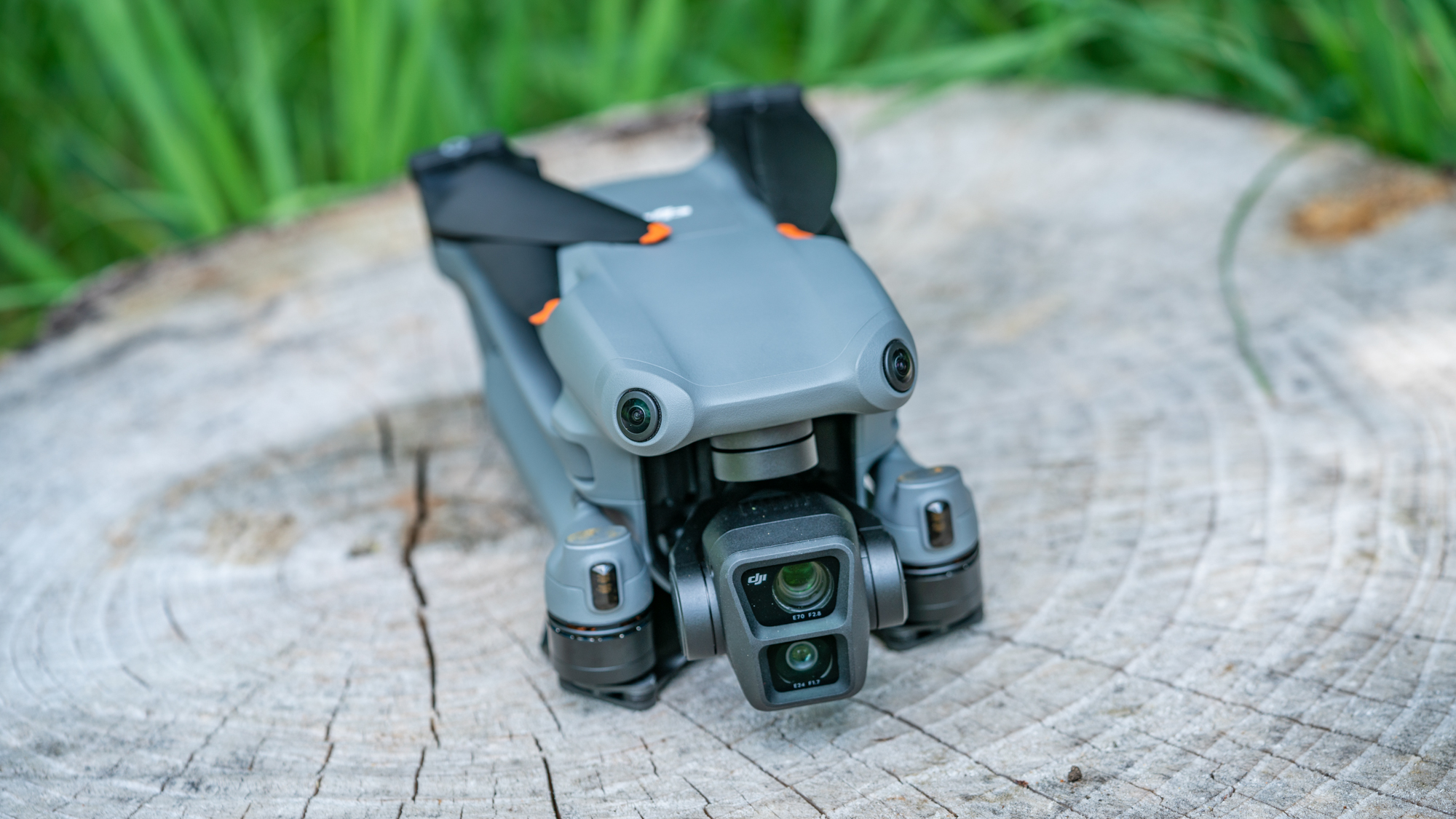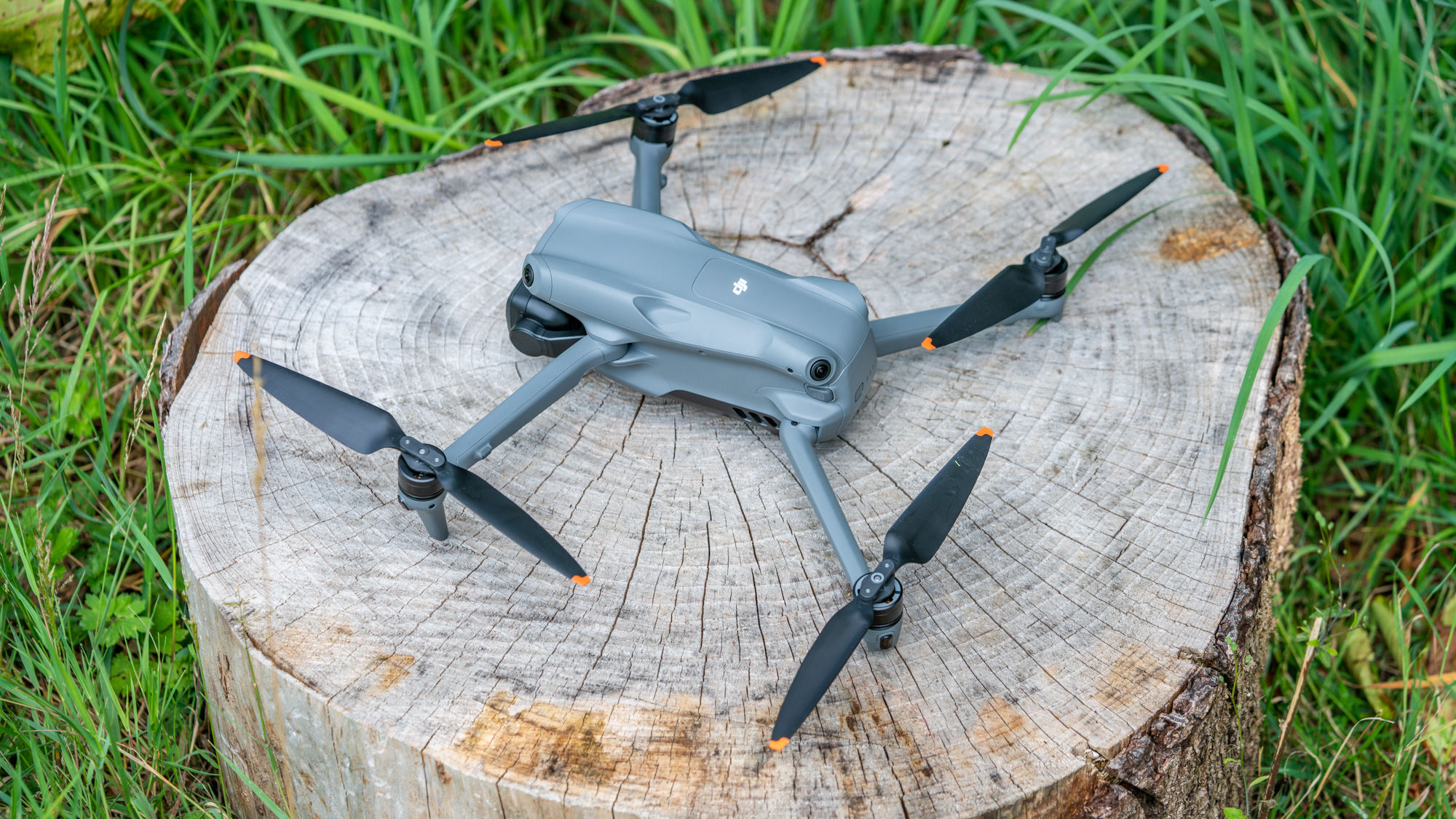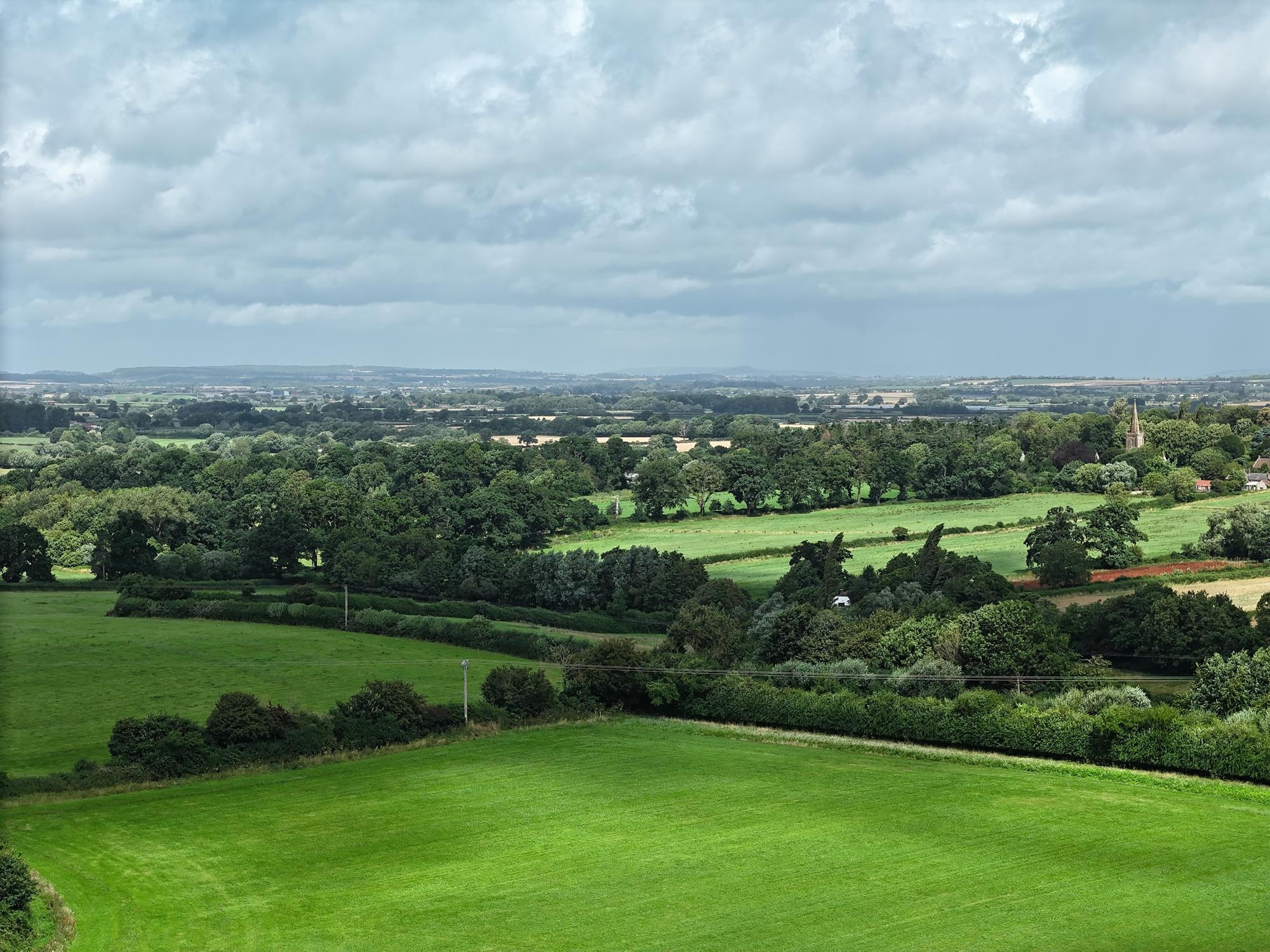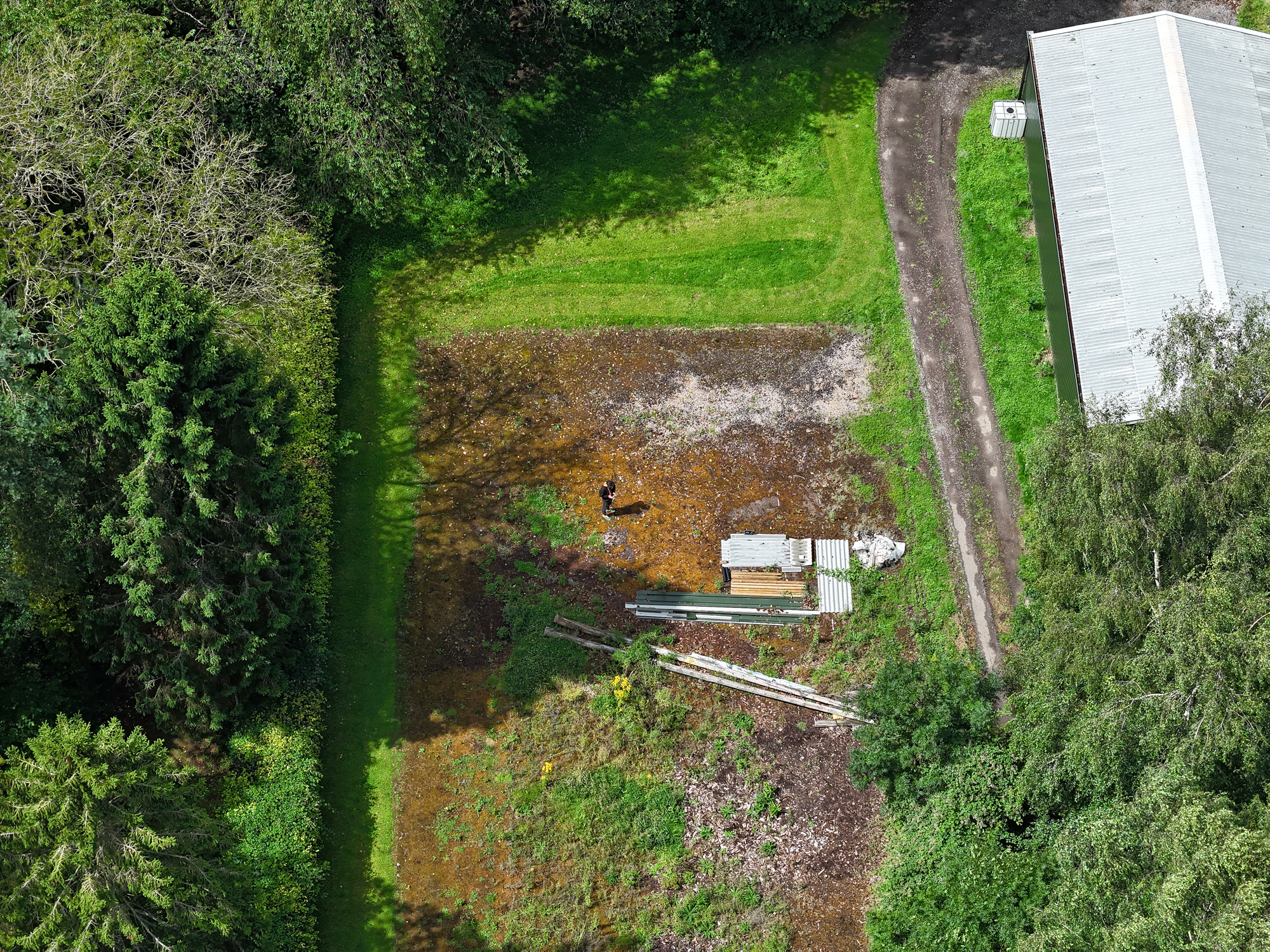
Two-minute review
Thanks to its dual cameras the DJI Air 3 has the potential to open up new creative avenues, making it an exciting drone to play with. While the 3x zoom may not be obviously useful at first – after all why not just fly closer? – what it offers is the ability to shoot or film what a drone this size can’t get close to, such as people and crowds. It could therefore be useful to event photographers as a way to shoot safely and legally. I can see it being a useful for landscape photographers, too – perhaps even to shoot active volcanos without your drone being turned into a lump of melted plastic.
Both cameras shoot 12MP or 48MP JPEG and/or raw files on two 1/1.3-inch CMOS sensors, the same sensor used on the DJI Mini 3 Pro. Video is up to 100fps at 4K with the ability to shoot 2.7K at 60fps in vertical mode, a feature that's very useful if you share videos on social media. Video can be recorded with both cameras offering 10-bit D-Log M and 10-bit HLG color modes; 10-bit D-Log M mode offers more flexibility in post production with respect to detail available in highlights and shadows, as well as color grading.

The 24mm equivalent lens has a fixed aperture of f/1.7, while the 70mm equivalent is an f/2.8 lens.
The DJI Air 3 also offers excellent flight and safety features which never fail to impress – it makes total sense for DJI to focus on drone safety if it's to continue existing in a world of increasingly tough, varied and inconsistent drone regulations. Safety features include Omnidirectional Obstacle Sensing, APAS 5.0 anti-collision, and Advanced Return to Home, all of which, when enabled, combine to make it pretty difficult to crash.
Deciding if this is the right drone for you ultimately boils down to your needs as a pilot and as a photographer/filmmaker. The Air 3 is positioned between the more affordable and feature-packed Mini 3 Pro, and the much more expensive but highly capable C2-category Mavic 3 Pro. Although the Air 3 is missing the 'Pro' moniker, its size, features and dual cameras provide a good middle ground for those struggling to make a decision. It's a perfectly suitable drone for beginners wanting to push their creative potential, while equally appealing to more professional pilots on a budget.
The DJI Air 3 is also a more versatile offering than the DJI Air 2S and a shoo-in for our best drones guide.
DJI Air 3: release date and price
- Available from July 25 2023
- Starts at $1,099 / £962 / AU$1,699
- Two controller options
The much anticipated DJI Air 3 was available immediately after being announced on July 25 2023. Positioned between the Mini 3 Pro and Mavic 3 Pro, it's available either as a standard package (drone and remote) or as the Fly More Combo with additional batteries, a bag, and other accessories. There's a choice of two controllers: the DJI RC-N2 (which replaces the DJI RC-N1) and the DJI RC 2, an upgrade from the DJI RC that sports two antennas to improve its range and performance.
Price-wise, the Air 3 drone with the RC-N2 remote and a battery will cost $1,099 / £962 / AU$1,699. That's an increase over the Air 2S, which was priced at $999 / £899 / AU$1,549 with battery and remote when it launched in 2021, but arguably a modest one given that you’re getting lots more features and upgraded remote.
Kit options include the Air 3 with the DJI RC-N2 for $1,099 / £962 / $1,099, the DJI RC-N2 Fly More Combo for $1,349 / £1,199 / AU$2,049, and the DJI RC 2 Fly More Bundle for $1,549 / £1,379 / AU$ 2,349. The DJI RC 2 will retail for $369 / £323 / AU$549 and a single additional battery will cost $159 / £129 / AU$359. Fly More combos come with two additional batteries, a carry bag, a charging hub and other useful accessories, and offer value if you see yourself requiring extra batteries anyway.
DJI Air 3: Design and controller
- In line with recent foldable DJI designs
- Imposing dual camera
- 720g – European C1 rating
The Air 3 sports a look very much in line with other foldable DJI products, in particular previous Mavics with their folding arms. What makes it stand out is its dual camera, which is large in size and protrudes from the main body. Without propellers the drone measures folded: 207 x 100.5 x 91.1mm and unfolded: 258.8 x 326 x 105.8mm.
Weighing 720g, in the UK the DJI Air 3 is classed as a C1 category drone (up to 900g), meaning it's considered a lower risk to third parties than drones like its heavier brother, the Mavic 3 Pro. This classification allows for more freedom in how and where you can fly; refer to the CAA website and our own UK drone laws explainer for more information on drone laws.
The Air 3 uses a 4,241mAh battery which is responsible for a third of the drone’s weight at 267g. It takes 60 minutes to charge, and provides a very generous 46 minutes of advertised flight time, 48% more than its predecessor, the DJI Air 2S. During my testing that figure has proven to be fairly accurate, provided you're cruising slowly on a windless day. A more 'sporty' flight or windy day will increase battery use, therefore shortening your flights. You might ask who, at this point, needs more than that sort of flight time, although with longer batteries come new applications.








The two controllers available are the DJI RC 2 and DJI RC-N2, both upgrades of their respective predecessors, the DJI RC and the DJI RC-N1.
The DJI RC 2 is a particularly welcome upgrade for anyone who's used the DJI RC, specifically in terms of range and signal. The DJI RC 2 features external antennas, which vastly improves the poor signal range DJI RC users have reported across many online drone forums. I flew the Air 3 with the DJI RC 2 in thick woodland with far better signal and range than I’d normally experience with the DJI RC.
DJI Air 3: Features and flight
- Omnidirectional collision avoidance
- ActiveTrack 5.0 subject tracking
- Advanced Return to Home
If you're used to DJI drones, you'll be instantly at home with the DJI Air 3. It flies very well straight out of the box, and if you're concerned about drawing unwanted attention, while it's understandably noisier than the Mini 3 Pro due to its size, the Air 3 does not produce unreasonable noise levels. As usual, to the untrained ear it may sound like a swarm of bees, but it's in no way screeching, as perhaps the DJI FPV is.
As with previous DJI drones, three flight modes are available: Sport mode provides a top speed of 42.5mph with collision avoidance switched off, which is useful if you're chasing a fast-moving subject; Normal mode is slower, with collision avoidance on, while Cine mode provides the slowest flight speed with reduced control sensitivity, for more precise maneuvering and capturing less hectic and more cinematic footage.
The Air 3's wind-speed resistance is impressive. It's advertised at just under 27mph, and I've flown it in 35mph winds and captured stable footage, although I did get a warning telling me that due to high wind speeds Return to Home may not function as expected. This is possibly its greatest advantage over a cheaper sub-250g drone such as the Mini 3 Pro, which itself offers impressive wind resistance for such a small drone.
As is now the case with all DJI drones, GPS positioning linked to nearly two dozen satellites enables precise hovering. Omnidirectional Obstacle Sensing (a first in the Air series) combined with DJI’s Advanced Pilot Assistance System (APAS) 5.0 makes flying in tricky environments worry-free. With collision avoidance turned on, the Air 3 can either brake or bypass obstacles when they’re detected. The bypass setting offers a 'Nifty' option designed to provide smoother flight when obstacles are detected in more complex environments; however the downside of this smoother setting is a greater risk of collision.



I tested the Air 3 in thick woodland, and made my way through branches and treetops without collision, greatly helped by the large screen on the RC 2 remote offering a much clearer image than a smartphone.
For extra safety the Air 3’s Advanced Return to Home scans up to 200m to calculate the safest route to its take-off point, while AirSense ADS-B provides notifications of nearby planes and helicopters. The Air 3 uses the next-generation DJI 04 transmission system, which can transmit a 1080p/60fps live feed at a distance up to 20km (in the US, up to 10km in other regions including Europe). For European users a 5.1Ghz frequency band has been added to improve transmission performance; does this hint at the release later this year of an O4 Air Unit for FPV quadcopters to replace the current O3 Air Unit?
Flight features include Focus Track for both cameras, which keeps the subject at the centre of the frame, Quickshots (a set of creative camera movements), while video modes include 2.7K vertical shooting convenient for social media, Mastershots (generates fast effortless cinematic footage), Night Mode for low-light environments, Hyperlapse (4K horizontal / 2.7K vertical), Slow Motion up to 100fps at 4K, Smartphoto 3.0, QuickTransfer, Lightcut (one-tap video editing), and Waypoint Flights, available on the Air series for the first time.
DJI Air 3: Image and video quality
- Dual camera (wide-angle and medium tele)
- Two 1/1.3-inch CMOS sensors
- Up to 4K 100fps video
The DJI Air 3 sports two cameras, each based on a 1/1.3-inch CMOS sensor. One is a wide-angle 24mm equivalent, and the other is a medium-telephoto 70mm equivalent, essentially offering 3x zoom. To some this may seem of little use; after all, why would you need a zoom lens if you can simply fly the drone closer to the subject? This is a valid question for which there are a couple of simple answers.
First of all, it gives you the ability to shoot events where crowds gather. It's illegal to fly over crowds (defined as a group of people unable to disperse quickly in case of an accident), and therefore a zoom lens could offer the ability to capture events (festivals, weddings, and so on) without having to get too close, and without posing a risk. Another benefit is when you need to capture anything at sea, perhaps a yacht, the zoom lens allows you to stay a little higher above the waves and still get the close-up footage you need.
A zoom lens also offers the potential to compress the perspective of a scene by bringing elements at different distances closer together, opening up new creative possibilities.










I really like the ability to tilt the camera from 90 degrees downwards to 60 degrees upwards; it's another great tool for capturing footage that stands out, and a feature that Mini 3 Pro users will be familiar with.
One important consideration is that both lenses have a fixed aperture: f/1.7 in the case of the wide-angle, and f/2.8 for the medium telephoto. If you only take photos, it’ll be just fine; but if your focus is videography, because you have no option to adjust your aperture you'll need to be prepared to change ND filters as often as the light changes, and landing more often than necessary can very quickly become annoying, and negates the usefulness of a 46-minute battery life.
As an example, I often shoot videos at sunrise. With a fixed aperture, the fast-increasing light levels mean I take off with no ND filter, then five minutes later as the sun rises I have to land to add an ND8, then another 10 minutes later I have to change to ND16.
The sensors are the same as on the Mini 3 Pro, so expect similarly good image quality. Both cameras capture 12MP or 48MP photos in raw and/or JPEG, and offer all the standard photography modes, including Single Shot, Burst Shooting, AEB and Timed. In terms of video both cameras can capture video in 4K up to 100fps, FHD up to 200fps, 2.7K vertical up to 60fps and FHD vertical up to 60fps.
Should I buy the DJI Air 3?

Buy it if...
Don't buy it if...
How I tested the DJI Mavic 3 Pro
I tested the DJI AIR 3 over the course of a couple of weeks. It was very windy with up to 35mph winds, except for one calmer day. This allowed me to test its performance with high wind both in terms of flying and the stills and video I was able to capture in these less than ideal conditions.
I flew it with and without obstacle avoidance, in a multitude of environments, from open fields to thick woodland. Wooded areas are a great environment in which to test a drone and its remote. How does the drone perform sensing and avoiding those trees? How good is the camera’s dynamic range; i.e. how does it deal with the contrast between dark shaded areas and bright light-wells, and how well does it perform in these sometimes low-light conditions. And how well does the signal penetrate through thick vegetation?

I tend to fly drones manually, with minimal assistance from either collision sensors or automatic flight features. This allows me to test their responsiveness and overall latency drops between the drone and the remote, depending on the surroundings.
All testing is carried out on private property, away from people and buildings, and in accordance with local aviation laws and restrictions to ensure that all flights are safe and legal.
I've been flying camera drones since 2014, and in the past year I've been flying FPV quadcopters, which has been both exciting and very challenging. I fly a multitude of different drones, from tinywhoops to carbon fiber freestyle drones and camera drones, for the variety of creative avenues they offer. I fly four different leading brands of drones, and have no affiliation to any of them.
First reviewed July 2023







